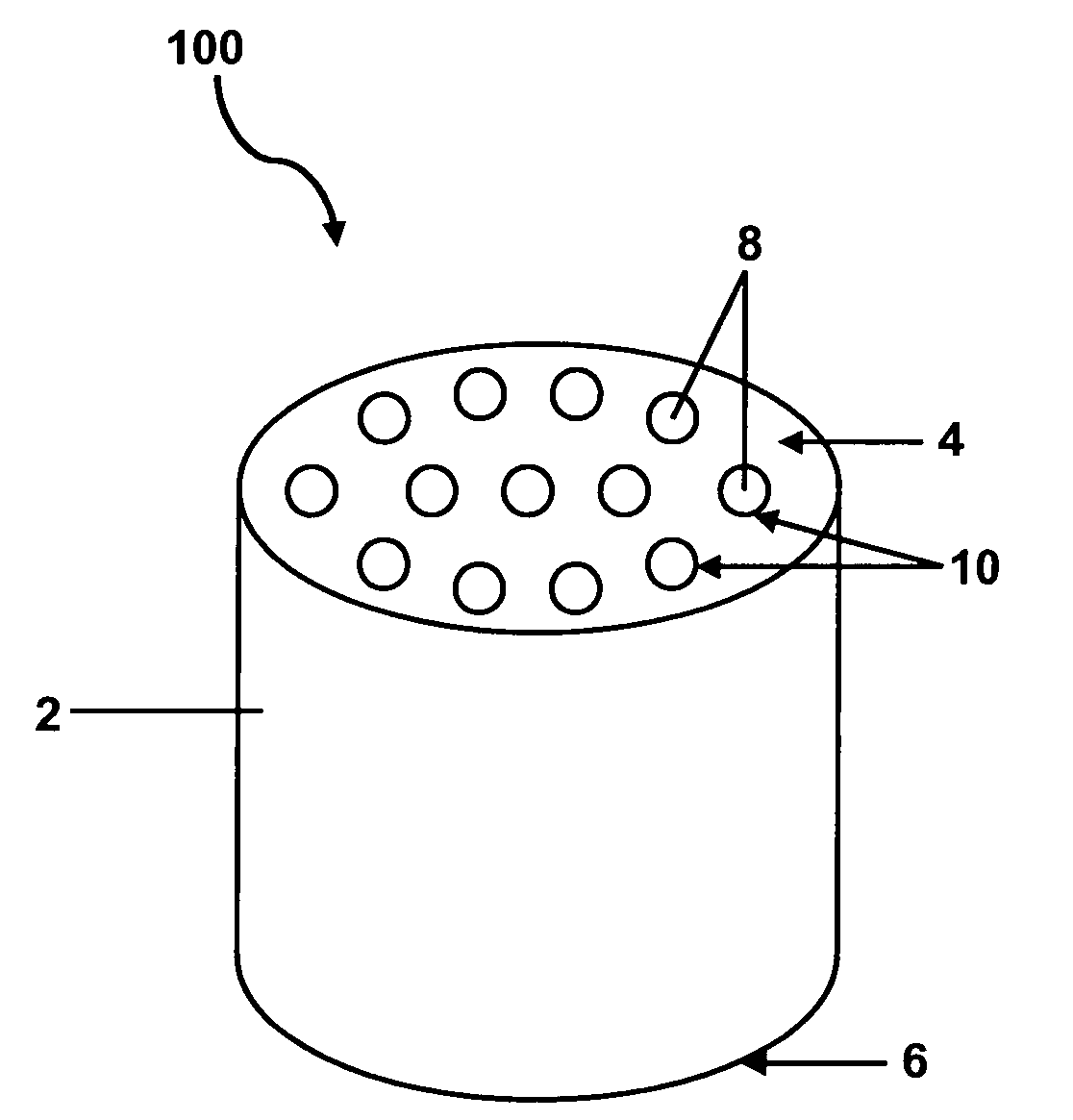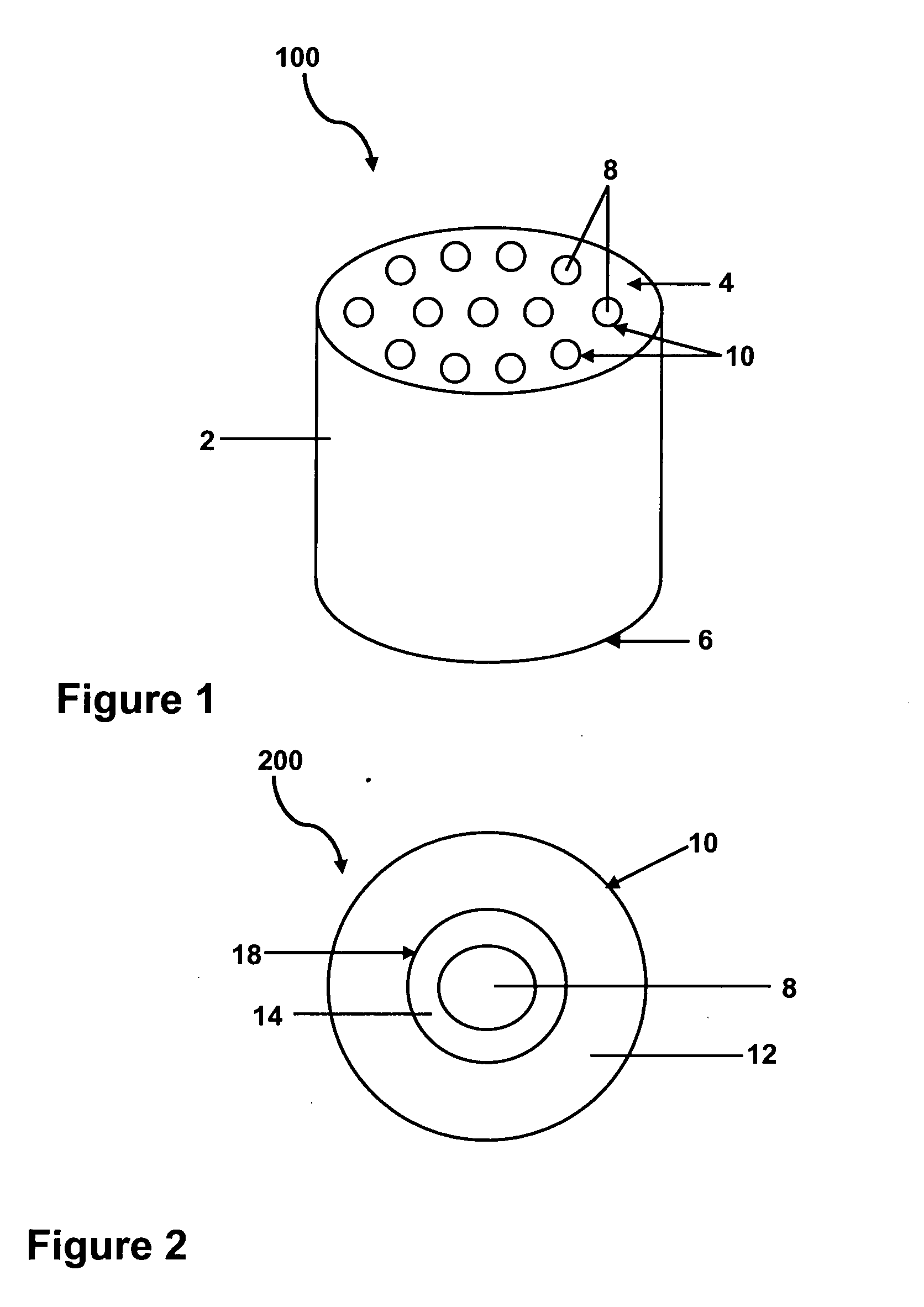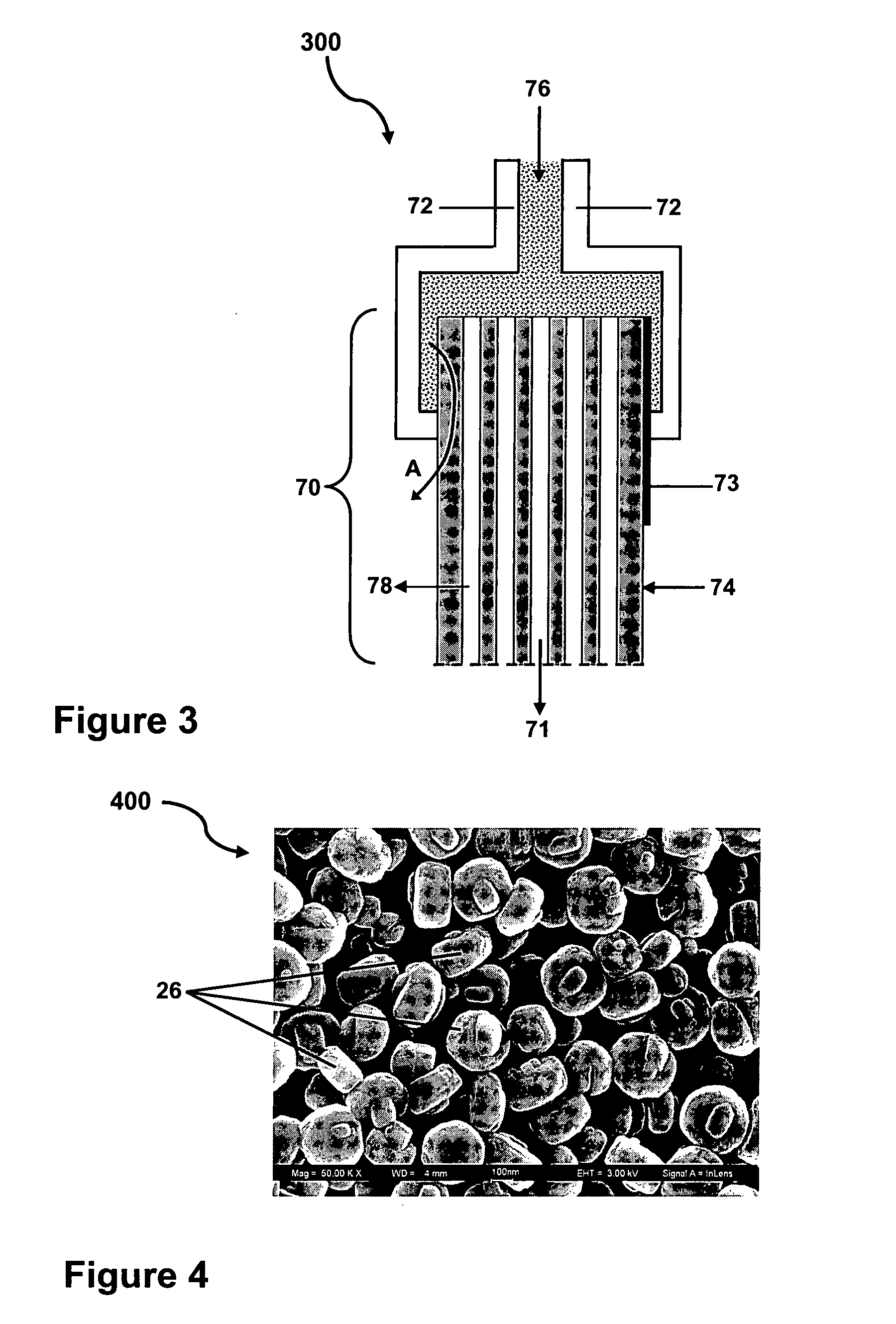Zeolite membrane structures and methods of making zeolite membrane structures
a technology of zeolite and membrane structure, applied in the field of zeolite membrane structure, can solve the problems of difficulty in obtaining such a zeolite membrane, high cost, and limited quality of zeolite membrane, and achieve the effect of improving energy and capital efficiency
- Summary
- Abstract
- Description
- Claims
- Application Information
AI Technical Summary
Benefits of technology
Problems solved by technology
Method used
Image
Examples
example 1
Preparation of Silicalite-1 and ZSM-5 Seed Layer Particles
[0080]Silicalite and ZSM-5 are MFI type zeolites. In this example, silicalite-1 and ZSM-5 seed particles are grown utilizing a reflux method.
[0081]In the silicalite-1 seed synthesis, a synthesis solution was prepared with tetraethylorthosilicate (TEOS, 98%, Alfa Aesar), tetrapropylammonium (TPAOH, 40%, Alfa Aesar), pure H2O and NaOH. The molar ratio of TEOS / TPAOH / H2O / NaOH was 1 / 0.15 / 18.8 / 0.008. The synthesis solution was prepared at room temperature. In this preparation, H2O and NaOH were first mixed together and then, TPAOH was added while stirring at room temperature. TEOS was then added drop-wise while stirring. The synthesis solution was continuously stirred for 24 hours. The final synthesis solution was clear in color.
[0082]The reflux seed synthesis was conducted at 85° C. for 72 hours. The final synthesis solution was filtered with No. 40 filter paper to remove large particles having diameters greater than 1 micron. The...
example 2
Coating of Zeolite Seeding Crystals on Alpha-Alumina Inorganic Porous Supports
[0087]In this example, the silicalite-1 seeds similar to those shown in FIG. 4 were flow-coated onto two pure α-Al2O3 honeycomb monolith inorganic porous supports with two different pore sizes on the top intermediate layer; one having a median pore size of about 200 nm, the other having a median pore size of about 800 nm. The honeycomb monolith inorganic porous supports had an outer diameter of about 9.7 mm with 19, 0.8 mm rounded inner channels uniformly distributed over the cross-sectional area of the honeycomb monolith inorganic porous supports. The honeycomb monolith inorganic porous supports were made of alpha-alumina with a median pore size of about 10 μm and a median porosity of about 45%. The inner channel surfaces of the honeycomb monolith inorganic porous supports were modified with intermediate layers of alpha-alumina material.
[0088]The zeolite seed layer coating slips were the same for both ho...
example 3
Preparation of Intergrown, Dense Silicalite-1 Layer with a Microwave Assisted Hydrothermal Reaction Method
[0091]The silicalite-1 seed coated support samples were processed by a secondary growth with a microwave assisted hydrothermal reaction method for intergrowth of the zeolite seed layer to form a dense silicalite-1 membrane. The synthesis solution for the secondary growth was prepared with the same material as used for the seed growth described in Example 1, but with a molar ratio of TEOS / TPAOH / H2O=1 / 0.12 / 5.8. The microwave assisted secondary growths were carried out using a Milestone 1600 microwave reactor with a 100 ml Teflon® autoclave.
[0092]2½ inch long honeycomb monolith inorganic porous supports with inner channel surfaces modified with intermediate layers of alpha-alumina material, coated with the silicalite-1 seed layer, dried and fired were vertically put into the Teflon® autoclave and immersed in the synthesis solution. The reaction condition was set at 400 Watts microw...
PUM
| Property | Measurement | Unit |
|---|---|---|
| Pore size | aaaaa | aaaaa |
| Pore size | aaaaa | aaaaa |
| Pore size | aaaaa | aaaaa |
Abstract
Description
Claims
Application Information
 Login to View More
Login to View More - R&D
- Intellectual Property
- Life Sciences
- Materials
- Tech Scout
- Unparalleled Data Quality
- Higher Quality Content
- 60% Fewer Hallucinations
Browse by: Latest US Patents, China's latest patents, Technical Efficacy Thesaurus, Application Domain, Technology Topic, Popular Technical Reports.
© 2025 PatSnap. All rights reserved.Legal|Privacy policy|Modern Slavery Act Transparency Statement|Sitemap|About US| Contact US: help@patsnap.com



